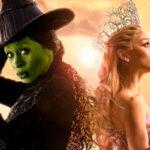

Pepsi, one of the world’s most iconic brands, has a history full of fascinating trivia that often goes unnoticed. Since its founding in 1893, when it was created as an alternative to Coca-Cola, Pepsi has not only won global taste but also innovated in marketing and market strategies. Its journey is marked by memorable advertising campaigns, product reformulations, and even name changes.
In this text, we will explore some of the most intriguing curiosities about Pepsi, from the secrets behind its successful campaigns to the evolution of its logo and strategies that have made it a giant in the beverage industry.
Prepare to discover how Pepsi has become a cultural and commercial icon that continues to fascinate and influence consumers around the world.
1 – WHEN WAS PEPSI CREATED?
Pepsi originated in 1893, created by Caleb Bradham, a pharmacist from New Bern, North Carolina, USA. Originally named “Brad’s Drink”, the beverage was developed as a soda to aid digestion. In 1898, Bradham decided to change the name to “Pepsi-Cola”, inspired by kola nuts and the word “pepsin”, a digestive enzyme, reflecting the original intent of the drink to help with digestion.
The first Pepsi-Cola formula was sold in a small pharmacy jar and quickly gained local popularity. In 1902, Bradham founded the Pepsi-Cola Company, and from there, the brand began to expand its presence.
2 – THE FIRST BRAND TO INTRODUCE 2-LITER BOTTLES
Pepsi was a pioneer in introducing 2-liter bottles to the soft drink market. Invented by Nathaniel Wyeth in the 1970s, these bottles were adopted by Pepsi in 1976, making it the first company to use them globally.
3 – PEPSI AND COCA COLA TOGETHER?
Few people are aware, but there was a concrete chance that a major soft drink brand could unite Pepsi-Cola and Coca-Cola. Between 1922 and 1933, Pepsi made three proposals to Coca-Cola for acquisition, all of which were rejected by Coca-Cola.
4 – THE LOGOS
Throughout its history, the brand has used 11 distinct logos. The original logo featured only the stylized name of the soda. The famous globe symbol was introduced in 1950.
5 – THE COLORS OF PEPSI
The classic colors of the soda (blue, red, and white) were chosen to reflect the American flag. They were introduced during World War II as a way to support American troops and the country’s war effort.
6 – OVER 500 PATENTS
Pepsi holds around 500 patents, including an intriguing one for a tennis racket. This racket replaces wood and nylon with a “resinous synthetic material that can be fully reinforced with high-strength fibers”.
7 – “TAKE THE PEPSI CHALLENGE”
In 1975, Pepsi launched a blind taste test called the “Pepsi Challenge”. In this experiment, participants with their eyes closed were invited to taste both Pepsi and Coca-Cola and choose their preference based solely on flavor.
The majority preferred Pepsi over Coca-Cola. Coca-Cola, in turn, also addressed the competition in its campaigns. In response to Pepsi’s challenge, Coca-Cola created ads that emphasized the tradition and emotional value of its brand, contrasting with Pepsi’s attempts to capture the young and modern market.
Coca-Cola also released commercials celebrating friendship and unity, such as the famous “I’d Like to Buy the World a Coke” campaign, which featured a message of peace and harmony, in contrast to Pepsi’s more provocative approach.
8 – “PEPSIMAN”
In the 1990s, Pepsi in Japan enlisted Canadian comic book artist Travis Charest to create a character for its TV commercials.
Charest developed a faceless superhero named “Pepsiman”, who raced to deliver the drink to “anyone who needed it”.
This character also inspired a video game released in 1999, where the goal was to guide the “hero” through obstacles to deliver the soda to fans.
9 – SANTA REJECTING COCA-COLA?
Pepsi is known for using its rivalry with Coca-Cola as a marketing and advertising strategy. In 2011, the company created a commercial in which Santa Claus rejected Coca-Cola and asked for a Pepsi instead.
10 – FIRST SOFT DRINK SOLD IN THE SOVIET UNION
In 1972, Pepsi became the first American product to be marketed and sold in stores in the former Soviet Union. This milestone began in 1959 during the Moscow Trade Fair, where Soviet Premier Nikita Khrushchev tasted and enjoyed the soda.
11 – VARIOUS PEPSI FLAVORS
There are many different versions of Pepsi around the world, some quite unusual. For example, Pepsi Baoba combines the classic soda with the baobab fruit, typical of Africa. Another interesting variation is Pepsi Cucumber, which has a cucumber flavor.
Additionally, there are Pepsi Peach (with a peach flavor), Pepsi Mojito (with lime and mint flavor), Pepsi White (with yogurt flavor), Pepsi Samba (combining mango and tamarind), Pepsi Tarik (with coffee and condensed milk flavor), and many more.
12 – A PEPSI PROMOTION ALMOST COST HER A MILITARY HELICOPTER
In 1995, Pepsi launched an advertising campaign called “Pepsi Stuff”, which encouraged consumers to accumulate points to exchange for products and merchandise. Points could be earned by purchasing Pepsi products and were then redeemed for promotional items like t-shirts, caps, and other freebies. However, in a television commercial, Pepsi made a provocative reference by offering a “Special Prize” for anyone who accumulated 7 million points, suggesting that this prize would be a military helicopter.
The commercial was meant to be humorous and clearly fictional, using an exaggerated approach to capture attention. The issue arose when a young man named John Leonard decided to try to accumulate the 7 million points required. He realized that, although the prize was presented as a joke, Pepsi had not clearly specified that the helicopter was just a joke and not a real prize.
Leonard decided to sue Pepsi, claiming that the campaign was misleading and that the company should honor its promise. The case was widely publicized and sparked debates about corporate responsibility in advertising campaigns and the interpretation of promotional messages.
Eventually, the court ruled in favor of Pepsi, considering that the offer of the helicopter was clearly a joke and there was no real intention to provide such a prize.
The company also managed to avoid significant financial repercussions, but the case served as a notable example of how advertising campaigns can lead to misunderstandings and unexpected litigation.
Throughout its history, Pepsi has stood out not only for its global presence but also for its innovation in flavor variations and limited editions.
Each new variation is an opportunity for the brand to experiment and surprise, staying relevant and interesting to a diverse audience.
With a rich history of innovation and creativity, Pepsi continues to challenge the norms of the soft drink market, offering its fans a range of options beyond the conventional.
This bold approach not only enhances the brand’s global appeal but also solidifies it as an icon in the beverage world.








